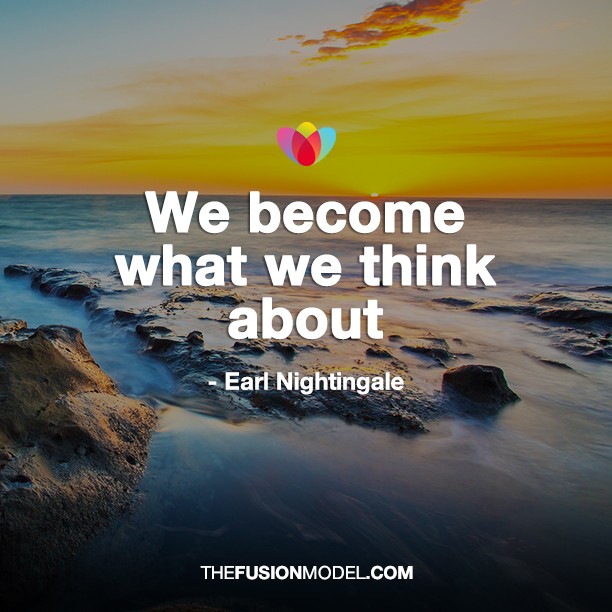The subject of suicide has hit the headlines again with the tragic death of actor Robin Williams.
He was someone who appeared to have it all; Looks, personality, wealth, talent and fame. He had an amazingly creative mind but was famously plagued by internal demons and addictions to drink and drugs. He was a visibly restless soul, with a manic, humorous energy which was both entertaining, yet unsettling in many ways.
Some people seem to function at a higher level. They are brighter and sharper. They shine like dazzling stars against a dark night sky.
If minds were likened to horses, theirs would be the thoroughbred stallion, fast and finely tuned, yet skittish and jumpy.
A Mental ‘super highway’
Are you a creative high achiever?
Are you someone who ‘thinks outside the box?’
Do you find your mind can feel over busy and ‘crowded’ with thoughts and ideas like a super- highway buzzing with fast moving traffic?
Do you love the highs, successes and innovations of your creative mind but hate the downside; the sleepless nights, stress and anxiety that seems to go alongside it?
Could You Ring me Please?
Call minder had a message for me recently from the mother of an ex client. ‘Hi, it’s Mrs Grant. You saw my daughter, Jules a while ago. I wonder if you could give me a ring please?’
I recalled Jules immediately. She was a young lady who had left an enormous impression upon me for many reasons.
Firstly, she was extraordinarily creative and intelligent. That was apparent from our first meeting.
Secondly, she came from what I would refer to as a ‘privileged’ background. Loved and indulged by her parents and family. From the outside looking in, it seemed Jules had everything; looks, brains, talent and a secure home.
Thirdly, she was deeply depressed and had been for many years.
She was also quite clear about her intention to commit suicide at the age of 21.
A High Flyer
Jules had been flying high at school.
Her good looks attracted male attention. Her fast wit and humour made her popular with other girls. Her intelligence rendered her a favourite with the teachers and she was adored at home by loving and caring parents.
As Jules entered the teenage years, she flew higher and higher, like Icarus soaring towards the sun. Her lifestyle got faster. Parties, drink and drugs were all now part of the scene. But these were taking their toll. Jules began to fall behind at school. She struggled with concentration and mood swings. She had a couple of ‘bad trips’ and began to fall into a depression.
Now she spent longer and longer in her room, worrying and ruminating, staying up all night, losing herself in online games and falling into a fitful sleep at dawn. She did not emerge until late afternoon, when would eat and return to her room and the gaming once more.
Haunted
This had been the pattern of her life for several years by the time we met for that first session.
I remember how haunted her eyes looked; how sad and hollow. She was eloquent in describing her situation, almost poetical. It was clear she had spent much time analyzing herself and trying to work out what was wrong. She barely had enough energy to speak the words but was quite clear about her intention to be dead by her 21st birthday.
‘Why would I want to live life like this’ she asked. ‘Why would I go on?’
Lost Hope
It seemed Jules had lost hope of recovery. She had been depressed now for so long that she had lost the connection to her former self; that light and bright, happy girl who had looked forward to a future filled with positive experiences.
I normally work very briefly with my clients but it was apparent Jules would be different. I set her homework tasks; reading, walking, keeping her bedroom for sleep only, phoning a friend. She didn’t do any of them. She had no energy and no motivation.
She’d simply giving up trying to get better.
The Mischievous Monkey
So I did what I usually do with ‘resistant’ clients. I got her to close her eyes and relax very deeply. Then I took her on a journey into herself using guided visualisation.
With her troubled and anxious left hemisphere settled, I could now harness the power of that creative imagination to help her rather than harm her as it had been doing.
It was a passive and relaxing exercise and seemed to give Jules some respite from her overactive mind. While her energy was so low, this was to form a large part of our therapeutic work together.
‘The mind is like a mischievous monkey’, I told her, ‘especially a very bright minds like yours. You have to keep it busy or it will start to play tricks on you.’
A Journey Inside the Mind
With Jules deeply relaxed, in visualisation, I told her therapeutic stories; some I wrote especially for her. They contained embedded suggestions, insights and wisdom which I felt would rekindle hope and be helpful.
In visualisation, I guided her to metaphorical resolution of past traumas and difficulties.
In her imagination, she gathered her internal army to fight and defeat the enemy, the depression. She worked on a metaphorical garden, pulling up weeds and sowing seeds for the future.
In visualisation, we travelled to the Himalayas, scaled a mountain and enjoyed the view from the top.
With visualisation and positive mental rehearsal, I was able to help her imagine a preferred future, making plans and breaking them down into manageable ‘baby steps’ that would take her in the direction she had chosen.
Her goal was to get her life back, to be able to concentrate and study again, graduate and embark on a research PhD.
She felt she had destroyed her brain with drugs and alcohol but I was able to reassure her that what we now know about brain neuroplasticity has shown quite clearly that, if any part of the brain suffers damage, other parts will take over.
This realization had an enormously empowering effect on her and the candle of hope was re-kindled.
What Became of Jules?
Slowly but surely Jules began to respond. She started completing her homework tasks, breathing her anxiety down, getting out more and bringing back a healthy rhythm and balance to her day-to-day routine. When we parted, she was resuming her education, re-taking previously failed exams and hoping to go on to university.
So it was with a little concern that I returned the call and spoke to Jules’ mother. Was she older than 21? It had been along time since I had seen her.
‘Do you remember Jules?’ she asked.
‘Yes I do.’ I replied ‘Very much so. How can I help you Mrs Grant?’
‘I just wanted to update you about Jules as you worked so closely together,’ she said, ‘We attended Jules’ graduation today. Her life is on track and I just wanted to call to say thank you for all your help. She starts her MA in September.’
‘That’s really good news’ I said. ‘It was a privilege to walk alongside her in her recovery.
Mrs Grant, I wonder if I could ask you how old Jules is now?’ I asked, hesitantly.
‘She’s 23, nearly 24 now,’ she replied ‘and all grown up.’
Visualisation is a powerful tool
I believe guided visualisation played an enormous part in helping prevent Jules’ amazingly creative mind destroying her.
She had spent too much time ‘looking in the mirror instead of looking out of the window.’ Lack of external stimulation had created a dangerous internal environment and all her brilliant intellect had been focused on herself.
When she was de-motivated and convinced her life was over, the calming and positive visualisation settled her troubled left hemisphere allowing her to tap into the innate wisdom of her right brain.
Visualisation is something we can do for ourselves, and many do, but often, we use our powerful imaginations to paint scary pictures in our minds of a negative future. Rather than focus on success, we dwell on failure and lose hope in the here and now.
That creates depression. Many people who try to end their lives do not want to die forever, they simply want the pain of living to stop.
Learn to Use your Amazingly Creative Mind
Learn to harness your amazingly creative mind to help, not harm, with this easy 7 step system:
- Create a picture of the life you want to live. Make it as detailed as possible.
- Develop your image of the future by writing it down, drawing pictures, cutting out photos from magazines.
- Create a white board and place the words and images into a colourful visual collage.
- Think of a positive, empowering affirmation such as ‘Yes I can’ and include that in the collage.
- Look at the board every day and use it as a prompt for your own eyes-closed, visualisation
- Now, imagine you are living that life. What does it look like, feel like, sound like, even smell and taste like?
- Repeat this exercise often and re set goals at regular intervals.
The Power of Positive Thinking
We all have imaginations. They are powerful reality generators.
Reverend Norman Vincent Peale, author of ‘The Power of Positive Thinking‘ understood the true nature of this extraordinary internal mechanism and summed it up in his mantra ‘Picturise, prayerise, actualise.’
Shakespeare understood the essential wisdom about the human brain and perception when he wrote ‘Nothing is either good or bad, but thinking makes it so.’ We need to learn to direct our attention where it will be most helpful to us.
Do it often and keep a record of the impact it has on your life. Mind management is a skill and, like all skills, improves with regular practice.




